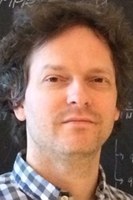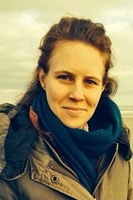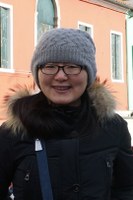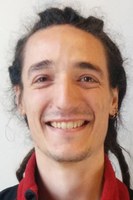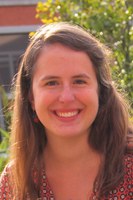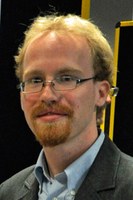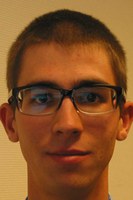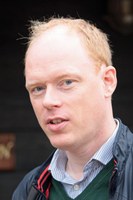Spring Meeting WSC 2015
Spring meeting WSC 2015
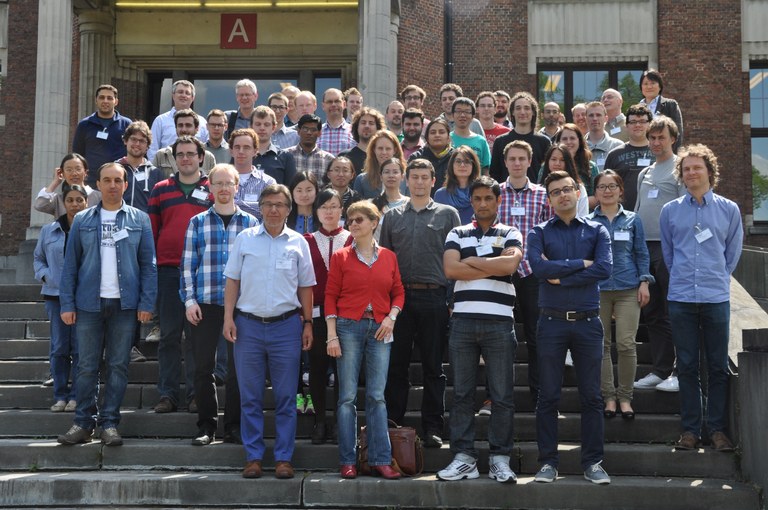
Participants WSC Spring meeting 2015 in Antwerp
Friday May 8-th, 2015, the Werkgemeenschap Scientific Computing is organizing, together with the Computational Mathematics (CMA) of the University of Antwerp its annually spring meeting at the Campus Middelheim in Antwerp. A mix of nine young and senior researchers have been selected to give a presentation on their research.
Participation (including lunch) is free of charge but registration is obligatory.
We are very happy to announce that also the PhDays 2015, a special weekend for all PhD students in Scientific Computing from the Dutch and Flemish universities, will be held from May 8 to 10 in Amel (Ardennes, Belgium). For PhD students a perfect chance to combine the Spring Meeting of the WSC with the PhDays.
Location
The Middelheimcampus of the Universitey of Antwerp will be the place to be.
Departement Wiskunde-Informatica
Gebouw A, lokaal A.143
Middelheimlaan 1
B-2020 Antwerpen-Wilrijk
Program
| 09.00-09.30 hours | Registration, coffee/tea |
| 09.35-10.10 hours | Dirk Nuyens |
| "High"-dimensional integrals and expectations using lattice rules [abstract] | |
| 10.10-10.35 hours | Sarah Gaaf |
| Probabilistic bounds for the matrix condition number with extended Lanczos bidiagonalization [abstract] | |
| 10.35-11.00 hours | Lulu Tian |
| A Local Discontinuous Galerkin Method for (non-) isothermal flows with phase transitions [abstract] | |
| 11.00-11.30 hours | Coffee/tea break |
| 11.30-11.55 hours | Matteo Briani |
| Exponential analysis, sparse interpolation and Pade approximation [abstract] | |
| 11.55-12.20 hours | Charlotte Sonck |
| Numerical computation of equilibria of cell population models with internal cell cycle [abstract] | |
| 12.20-13.30 hours | Lunch |
| 13.30-13.55 hours | Henk Seubers |
| Interaction and Causality [abstract] | |
| 13.55-14.20 hours | Roel Van Beeumen |
| Rational Krylov methods for solving nonlinear eigenvalue problems [abstract] | |
| 14.20-14.50 hours | Coffee/tea break |
| 14.50-15.15 hours | Peiyao Luo |
| Multigrid method for poroelasticity equations and simulations of the rock failure process [abstract] | |
| 15.15-15.50 hours | Chris Stolk |
| Sweeping and multigrid methods for the high-frequency Helmholtz equation [abstract] |
Speakers Spring meeting WSC 2015
Organisation, participation and registration
This spring meeting is organised yearly by the Werkgemeenschap Scientific Computing (WSC), this year in coorporation with the Computational Mathematics (CMA) of the University of Antwerp. Organizing committee:
Prof.dr. Annie Cuyt (UAntwerp),
Prof.dr. Marnix Van Daele (RU Gent),
Prof.dr. Dirk Roose (KU Leuven),
Prof.dr. Kees Oosterlee (CWI, TU Delft),
Drs. Margreet Nool (CWI, secretary WSC).
Contact
Questions? Please ask: Margreet Nool or call +31 20 592 41 20.
Abstracts
Dirk Nuyens (KU Leuven)
"High"-dimensional integrals and expectations using lattice rules
Sarah Gaaf (TU Eindhoven)
Probabilistic bounds for the matrix condition number with extended Lanczos bidiagonalization
Reliable estimates for the condition number of a large (sparse) matrix A are important in many applications. To get an approximation for the condition number κ(A), an approximation for the smallest singular value is needed. Standard Krylov subspaces are usually unsuitable for finding a good approximation to the smallest singular value. Therefore, we study extended Krylov subspaces which turn out to be ideal for the simultaneous approximation of both the smallest and largest singular value of a matrix. First, we develop a new extended Lanczos bidiagonalization method.
With this method we obtain a lower bound for the condition number. Moreover, the method also yields probabilistic upper bounds for κ(A). The user can select the probability with which the upper bound holds, as well as the ratio of the probabilistic upper bound and the lower bound.
[back]
Lulu Tian (Universiteit Twente)
A Local Discontinuous Galerkin Method for (non-) isothermal flows with phase transitions
In this presentation, we will discuss a local discontinuous Galerkin (LDG) scheme for the Navier-Stokes-Korteweg(NSK) equations modelling phase transitions between a liquid and a vapor phase. Standard numerical discretizations are known to violate discrete versions of inherent energy inequalities, thus leading to spurious dynamics of computed solutions. An LDG scheme is proposed with an implicit Runge-Kutta time integration to solve the NSK equations in conservative form. To capture the dynamic interface between the two phases accurately and save memory and computational expenses, local refinement is applied. Computational experiments are provided to demonstrate the solvability and convergence of the LDG scheme. The methods are relatively simple, robust, of arbitrary order of accuracy and free of numerical artifacts.
[back]
Matteo Briani (UAntwerp)
Exponential analysis, sparse interpolation and Pade approximation
Exponential analysis, which is essentially a sparse interpolation method, models a possibly noisy signal using a multi-exponential model. After computing the frequencies, phases, damping factors and amplitudes, remains to separate the noise terms from the signal terms. Here, results from Pade approximation theory can be used. We illustrate the different steps in this signal reconstruction problem using several examples and show that the problem is not an easy one. Many researchers world-wide have already contributed to its solution. To conclude some open questions are presented.
[back]
Charlotte Sonck (RU Gent)
Numerical computation of equilibria of cell population models with internal cell cycle
Although a key mechanism in life, the cell cycle still has some mysteries. J.J. Tyson and B. Novák developed several widely used models for the cell cycle of budding yeast, fission yeast and other organisms. A striking feature in the behaviour of such models is the funnel effect, by which the internal structure of the cell in the later phases of its cycle (shortly before division) is nearly independent from its structure in the earlier phases of the cycle. This mathematical property of the models makes biological sense.
We study the behaviour of the cells at the population level by incorporating these models in structured cell population ODE models. We investigate how different division assumptions influence the behaviour of the population of cells and in particular how they affect the equilibrium states, i.e. constant distributions of the masses of cells born per unit of time.
Numerically, we obtain the equilibrium as the fixed point of a map, namely the output of a large collection of integrations over age for cells born with a given birth mass, followed by its implications for the consumption of nutrient. At least in some cases the orbit of the map converges to a stable fixed point. This equilibrium can be studied under parameter variation, for which natural parameters are the concentration of nutrient and the death rate of the cells. An important feature is that although the birth mass space is discretised in every step of the map, this discretisation is not fixed and is adapted according to which cells are born during the age integrations. We will discuss the results we obtained so far, starting with a model with a fairly simple choice for the cell cycle mechanism that is based on the Toy Model of Tyson and Novák, present the fixed point and its dependence on different division assumptions and parameter values for both the nutrient level and the used discretisation.
[back]
Henk Seubers (RU Groningen)
Interaction and Causality
Interaction consists of the physical reactions of several systems on each other. In fluid-structure interaction the structure reacts to the fluid forces by a change of motion. The flow in turn reacts by adjusting to these induced motions. This description assigns an arbitrary hierarchy of causes and consequences to the subsystems, thereby affecting the efficiency of the numerical iteration process greatly. It is however possible to reformulate the problem such that the strongest causal relations reside within the same subsystem: the quasi-simultaneous approach. This considerably simplifies the global interaction problem, at the cost of adding complexity to the local problem. First results of a numerical experiment on a plunging lifeboat show how this balance affects the computational effort.
[back]
Roel van Beeumen (KU Leuven)
Rational Krylov methods for solving nonlinear eigenvalue problems
We present an overview of rational Krylov methods for solving the nonlinear eigenvalue problem (NLEP): A(λ)x = 0. For many years linearizations are used for solving polynomial eigenvalue problems. On the other hand, for the general nonlinear case, A(λ) can first be approximated by a (rational) matrix polynomial and then a convenient linearization is used. The major disadvantage of linearization based methods is the growing memory and orthogonalization costs with the iteration count, i.e., in general they are proportional to the degree of the polynomial. Therefore, we introduce a new framework of Compact Rational Krylov (CORK) methods which maximally exploit the structure of the linearization pencils. In this way, the extra memory and orthogonalization costs due to the linearization of the original eigenvalue problems are negligible for large-scale problems.
[back]
Peiyao Luo (TU Delft)
Multigrid method for poroelasticity equations and simulations of the rock failure process
The poroelastic model in saturated geological media can be modeled by means of Biot's theory of consolidation. It describes the time-dependent interaction between the deformation of porous material and the fluid flow pressure inside of it. The problem can be formulated as a system of partial differential equations for the unknowns displacements u, v and pore pressure of the fluid p.
A multigrid method is employed for the linear poroelastic equations with an Uzawa-type iteration as the smoother. The Uzawa smoother is an equation-wise procedure. For the displacement components, we prefer symmetric Gauss-Seidel smoothing; that is one forward Gauss-Seidel sweep for all displacement unknowns followed by one backward sweep. For the smoothing of the pressure unknowns, a Richardson iteration is applied. As usual, the Richardson iteration involves a damping parameter which may seriously affect the convergence speed. Our analysis of the smoother is based on the framework of local Fourier analysis (LFA).
An analytic bound can be obtained on the smoothing factor associated with the proposed Uzawa smoother. From our analysis, we know how to select the above damping parameter as a function of the main problem parameters. Numerical experiments show that our upper bound provides a satisfactory estimation of the exact smoothing factor, and the selected damping parameter is optimal. In addition, the smoothing factor reflects well the two-grid convergence factor obtained from local Fourier analysis, as well as the actual convergence factor from the real multigrid cycles.
In another aspect, a nonlinear multigrid method is applied for the system of incompressible poroelasticity equations in the steady case, considering heterogeneity and nonlinear permeability. Two different smoothers are examined to search for an efficient multigrid method for the discretized equations on collocated grids. Numerical results show a good convergence performance. Furthermore, we simulate the rock failure process based on a well-developed model coupling the effects of seepage, damage and the stress field in a heterogeneous rock sample. Tests are performed to investigate the fracturing.
[back]
Chris Stolk (University of Amsterdam)
Sweeping and multigrid methods for the high-frequency Helmholtz equation
Solving the high-frequency Helmholtz equation in 3-D is a challenging numerical problem because “standard” methods like the multigrid method or Krylov solvers do not work or perform poorly. In a recently developed class of methods, the domain is split into many thin layer subdomains and an approximate solution is constructed based on the subdomain solutions, that can be determined efficiently. In this talk we will describe recent developments in this area of research.
[back]

